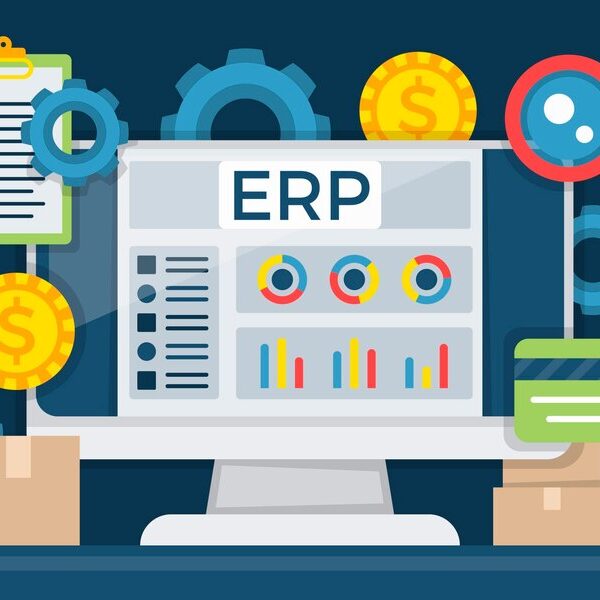
Introduction
Importance of Real-Time Exchange Rate Data
Currency prices typically change in a worldwide economy for a variety of reasons, including market emotion, geopolitical events, and economic indicators. Real-time exchange rate information is crucial for investment firms, travelers, and enterprises involved in international trade. It guarantees reasonable prices, efficient transactions, and well-informed choices.
Benefits of Using APIs for Exchange Rate Data
Application Programming Interfaces (APIs) offer a streamlined way to access real-time exchange rate data. They allow seamless integration of exchange rate information into applications, websites, and financial tools. By using APIs, businesses can automate currency conversion processes, reducing manual errors and saving time.
Overview of the Article
This article explores the landscape of free API solutions for real-time exchange rate data. We will examine top free APIs, their features, benefits, and practical applications across various industries. Additionally, we will provide technical specifications, implementation guidelines, case studies, and address common challenges associated with using these APIs.
Understanding Exchange Rate APIs
Definition and Purpose
API Exchange rates Free are web-based services that provide up-to-date exchange rate information. They enable applications to fetch current and historical exchange rate data for various currencies, facilitating accurate currency conversion.
How Exchange Rate APIs Work
Exchange rate APIs work by aggregating data from multiple financial sources, such as central banks and forex markets. This data is then processed and made available through API endpoints. Users can make requests to these endpoints to retrieve exchange rate information in various formats like JSON or XML.
Key Features of Exchange Rate APIs
- Real-time data: Provides the latest exchange rates.
- Historical data: Access to past exchange rates for analysis.
- Multi-currency support: Covers a wide range of global currencies.
- Automated conversions: Simplifies currency conversion processes.
Importance of Real-Time Data in Currency Exchange
Real-time exchange rate data is crucial for minimizing financial risks associated with currency fluctuations. It helps businesses set accurate prices, manage costs, and enhance profitability. For travelers, it ensures they get the best rates when converting money.
Top Free Exchange Rate APIs
CurrencyLayer
Overview and Features
CurrencyLayer provides a free plan that offers real-time exchange rates for up to 168 currencies. It features reliable data sourced from trusted financial institutions and offers historical data access.
Supported Currencies
Covers a comprehensive list of currencies, including exotic currencies.
Integration Process
Registration for an API key is required. Integration guides and code snippets are available to facilitate the process.
Fixer.io
Overview and Features
Fixer.io provides real-time exchange rates for over 170 currencies. The free plan offers essential features suitable for small to medium-sized applications.
Supported Currencies
Includes support for major global currencies.
Integration Process
Users must sign up for an API key. Fixer.io offers comprehensive documentation and examples to help with integration.
Benefits of Using Free Exchange Rate APIs
Cost-Effectiveness
Free exchange rate APIs eliminate the need for expensive subscriptions or manual data acquisition, making them an economical choice for businesses and developers.
Real-Time Updates
These APIs provide up-to-the-minute exchange rate data, ensuring that users always have access to the latest information.
Ease of Integration
Most free exchange rate APIs come with detailed documentation, code examples, and libraries, simplifying the integration process.
Access to Historical Data
Many free APIs offer access to historical exchange rate data, enabling businesses to analyze trends and make informed financial decisions.
Enhanced Accuracy
Automated exchange rate data retrieval reduces the risk of human error, ensuring accurate currency conversions.
Applications in Different Industries
E-commerce
Online retailers can use exchange rate APIs to display prices in multiple currencies, enhancing the shopping experience for international customers and reducing cart abandonment rates.
Financial Services
Banks, investment firms, and fintech companies rely on exchange rate APIs to provide real-time currency conversion services to their clients, improving transparency and trust.
Travel and Tourism
Travel agencies and tour operators use exchange rate APIs to offer accurate pricing for international packages, flights, and accommodation, attracting global customers.
Import and Export Businesses
Companies involved in import and export can use exchange rate APIs to set competitive prices and manage costs, ensuring profitability despite currency fluctuations.
Freelancing and Remote Work
Freelancers and remote workers often deal with clients in different countries. Exchange rate APIs help them invoice accurately and receive payments in their preferred currencies.
Technical Specifications
API Endpoints
Exchange rate APIs typically offer endpoints for current exchange rates, historical data, and conversion tools. These endpoints can be accessed via HTTP requests.
Supported Data Formats
Most APIs provide data in JSON and XML formats, making it easy to integrate with various programming languages and platforms.
Security Features
APIs use secure access tokens and encryption to protect sensitive data and ensure secure transactions.
Rate Limits and Usage Quotas
Free plans often come with rate limits and usage quotas. Understanding these limits is crucial to avoid disruptions in service.
How to Implement Exchange Rate APIs
Getting Started with an API
Choose a suitable API based on your requirements and register for an API key. Review the API documentation to understand the available endpoints and data formats.
API Key Registration
Sign up on the API provider’s website to obtain an API key. This key is used to authenticate your requests and track usage.
Integration with Existing Software
Use the provided endpoints and code examples to integrate the API with your software. This may involve making HTTP requests and parsing the returned data.
Code Examples
Most API providers offer sample code in various programming languages, such as Python, JavaScript, and PHP, to help developers get started quickly.
Troubleshooting Common Issues
Refer to the API documentation and support forums for troubleshooting tips. Common issues include authentication errors, exceeding rate limits, and handling API downtime.
Case Studies
E-commerce Success Story
An online retailer integrated a free exchange rate API to display prices in multiple currencies. This led to a 20% increase in international sales and reduced cart abandonment rates.
Financial Services Efficiency Improvement
A fintech startup used a free exchange rate API to offer real-time currency conversion services. This enhanced user experience and attracted more customers, boosting revenue.
Travel Agency Streamlining Bookings
A travel agency integrated an exchange rate API to provide accurate pricing for international packages. This improved customer satisfaction and increased bookings.
Import/Export Business Optimization
An import/export company used an exchange rate API to manage costs and set competitive prices. This ensured profitability despite currency fluctuations.
Freelancer Payment Management
A freelancer integrated an exchange rate API to invoice clients in their preferred currencies. This simplified payment processing and ensured timely payments.
Challenges and Solutions
Dealing with API Downtime
Plan for API downtime by implementing fallback mechanisms, such as caching the last known exchange rates and retrying failed requests.
Managing Exchange Rate Fluctuations
Use exchange rate APIs to monitor fluctuations and set thresholds for acceptable variance. Automate alerts to notify you of significant changes.
Ensuring Data Security
Use secure access tokens and follow best practices for API security to protect sensitive data and prevent unauthorized access.
Handling Large Transaction Volumes
Optimize your API usage by implementing efficient request handling and caching strategies to reduce load and avoid exceeding rate limits.
Integration with Legacy Systems
When integrating with legacy systems, use middleware or APIs that support various data formats and communication protocols to ensure compatibility.
Future of Exchange Rate APIs
Upcoming Features
API providers are continuously adding new features, such as more frequent updates, enhanced security measures, and support for additional currencies.
Potential Industry Impact
As exchange rate APIs become more advanced, they will further streamline international transactions, reduce costs, and enhance efficiency across industries.
Integration with Emerging Technologies
Future integrations may include blockchain technology, AI, and machine learning to provide even more accurate and predictive exchange rate data.
Predictions for Global Trade
As global trade continues to grow, exchange rate APIs will play a crucial role in facilitating seamless and efficient international transactions.
Continuous Improvement Strategies
API providers will continue to improve their offerings based on user feedback and technological advancements, ensuring they meet the evolving needs of businesses.
Comparative Analysis
Free Exchange Rate APIs vs. Traditional Methods
Free exchange rate APIs offer real-time data and automation, significantly improving accuracy and efficiency compared to manual calculations and static rate tables.
Comparison with Premium Exchange Rate APIs
While free APIs offer essential features, premium APIs provide additional benefits, such as higher rate limits, more frequent updates, and advanced analytics.
Cost-Benefit Analysis
The cost savings and efficiency gains from using free exchange rate APIs often outweigh the expenses associated with premium services, making them a valuable tool for many businesses.
User Feedback and Reviews
Users generally praise free exchange rate APIs for their ease of use, reliability, and the support provided by API providers.
Market Position and Reputation
Free exchange rate APIs are widely used and trusted by businesses globally, known for their accuracy, reliability, and comprehensive features.
User Guides and Tutorials
Step-by-Step Setup Guide
- Register for an API key: Sign up on the API provider’s website.
- Install necessary libraries: Depending on your programming language, install any required libraries.
- Follow integration instructions: Use the API documentation to understand how to make requests and handle responses.
- Test the integration: Verify the integration with sample data.
- Implement error handling: Plan for potential errors and API downtime.
Best Practices for Using the API
- Regularly update your API key and keep it secure.
- Monitor your API usage to avoid hitting rate limits.
- Use caching strategies to improve performance and reduce load.
Advanced Features and Customization
Explore advanced features such as custom exchange rate alerts, historical data analysis, and usage reports to maximize the benefits of the API.
Common Pitfalls and How to Avoid Them
Avoid common issues like incorrect endpoint usage, failure to update API keys, and not handling errors gracefully. Follow best practices outlined in the documentation.
Resources for Further Learning
Utilize resources such as API documentation, tutorials, user forums, and online courses to deepen your understanding of API integration and usage.
Conclusion
Recap of Key Points
Free exchange rate APIs are powerful tools that provide real-time data, streamline currency conversion, and enhance international transactions. They are cost-effective, easy to integrate, and beneficial across various industries.
Importance of Efficient Currency Exchange
Efficient currency exchange is crucial for global business operations, impacting pricing, financial planning, and customer satisfaction.
Call to Action for Businesses
Businesses looking to improve their international operations should consider integrating free exchange rate APIs to leverage the benefits of real-time data and automation.
Final Thoughts on the Future of Global Transactions
As global trade continues to expand, exchange rate APIs will play an increasingly important role in ensuring smooth and efficient international transactions.
FAQs
What is an exchange rate API?
An exchange rate API is a web service that provides real-time and historical exchange rate data for various currencies.
How do free exchange rate APIs benefit my business?
Free exchange rate APIs enhance accuracy in currency conversion, provide real-time data, save costs, improve financial planning, and automate manual processes.
What industries can benefit the most from free exchange rate APIs?
Industries such as e-commerce, financial services, travel and tourism, import/export businesses, and freelancing can significantly benefit from using free exchange rate APIs.
How secure are free exchange rate APIs?
Free exchange rate APIs employ robust security measures, including encryption and secure access tokens, to protect sensitive data.
Are there any limitations to using free exchange rate APIs?
Free exchange rate APIs often come with rate limits and usage quotas. Understanding these limits is crucial to avoid disruptions in service.











